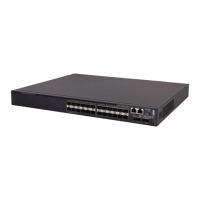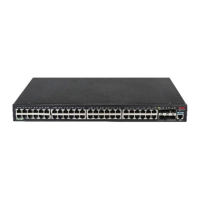378
Figure 98 DF election
As shown in Figure 98, without the DF election mechanism, both Router B and Router C can receive
multicast packets from Route A, and they might both forward the packets to downstream routers on the
local subnet. As a result, the RP (Router E) receives duplicate multicast packets. With the DF election
mechanism, once receiving the RP information, Router B and Router C initiate a DF election process for
the RP:
1. Router B and Router C multicast DF election messages to all IPv6 PIM routers. The election
messages carry the RP's address, and the priority and metric of the IPv6 unicast route or IPv6
MBGP route to the RP.
2. The router with a route of the highest priority becomes the DF.
3. In the case of a tie, the router with the route with the lowest metric wins the DF election.
4. In the case of a tie in the metric, the router with the highest link-local IPv6 address wins.
Bidirectional RPT building
A bidirectional RPT comprises a receiver-side RPT and a source-side RPT. The receiver-side RPT is rooted
at the RP and takes the routers directly connected with the receivers as leaves. The source-side RPT is also
rooted at the RP but takes the routers directly connected with the IPv6 multicast sources as leaves. The
processes for building these two parts are different.
Ethernet
Router B Router C
Router A
IPv6 Multicast packets
DF election message
RP
Source
Router DRouter E

